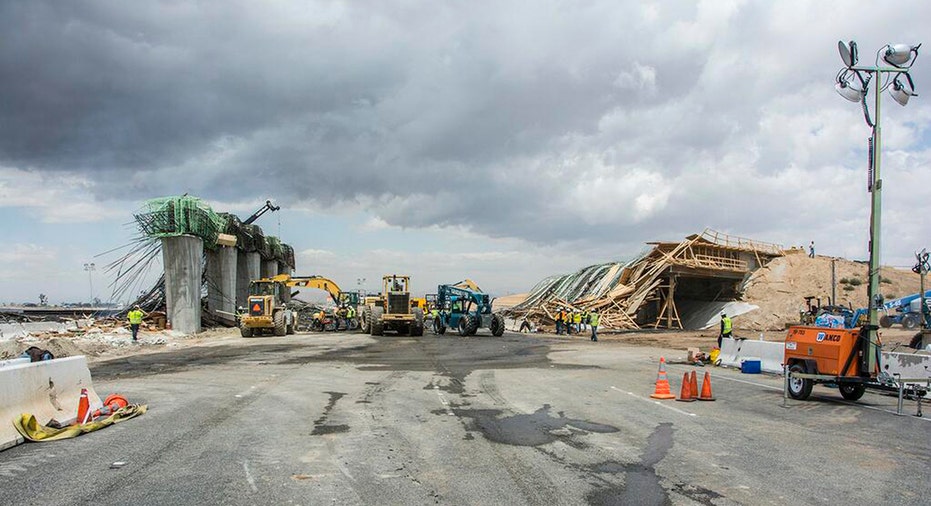U.S. Infrastructure Gets D-plus Grade in Civil Engineers' Report Card, Again

U.S. infrastructure was given a near-failing grade of D-plus by an engineering association on Thursday, a repeat of a rating that could give momentum to President Donald Trump's vow of a $1 trillion investment to rebuild everything from roads to dams.
The D+ grade from the American Society of Civil Engineers' (ASCE) is unchanged from its last report card in 2013, suggesting that only minor progress had been made in improving public works.
The ASCE estimated in a statement that the United States needed to invest $4.59 trillion by 2025 to bring its infrastructure to an adequate B- grade, a figure about $2 trillion higher than current funding levels.
"To see real progress, we need to make long-term infrastructure investment a priority," said Greg DiLoreto, chair of the ASCE's Committee on America'sInfrastructure, which prepared the report.
In its report card, the ASCE said substandard infrastructure was costing each American family as much as $3,400 in disposable income a year. It also noted that “after years of decline, traffic fatalities increased by 7 percent from 2014 to 2015, with 35,092 people dying on America’s roads.”
America’s water systems are leaking trillions of gallons of drinking water and more than 2,000 dams are at high risk of failure, the report said.
The ASCE's report could fuel the growing debate over infrastructure spending in Washington. In an address to Congress last week Trump said he would lawmakers to pass legislation that would produce $1 trillion in infrastructureinvestment and millions of new jobs.
Trump, a Republican and New York real estate developer, met on Wednesday with business leaders to discuss infrastructure plans.
Trump has not provided details but he has talked about a tax credit to encourage private sector investment. State governors have sent Trump a list of 428 projects they would like funded under a public works plan.
An analysis by the Brookings Institution think tank last month said spending on public works could make the economy more efficient and spur lagging productivity growth, a key factor in boosting Americans' standard of living.
Citing Commerce Department data, Brookings said that yearly government investment in public works had fallen by almost two-thirds in terms of its share of the economy from 1980 to 2015.
The ASCE gave the nation’s dams a D grade, and said problems go beyond California's 49-year-old Oroville Dam, where nearly 200,000 people were evacuated last month after drainage channels for the dam were damaged by heavy rainfall. (http://cdec.water.ca.gov/cgi-progs/profile?s=ORO&type=dam)
"The average age of the 90,580 dams in the country is 56 years," the report noted, adding that “the number of deficient high-hazard potential dams has also climbed to an estimated 2,170 or more.”
In the ASCE's A-to-F grading of 16 infrastructure categories, with A the top grade, seven areas showed progress and three declined.
The highest grade - B - went to rail, up from C+ in 2013. The report said significant spending, including $27.1 billion in 2015, was a major factor in the improvement.
The lowest grade was D- for transit, down from D four years ago. Chronically underfunded rail and bus systems face a $90 billion rebuilding backlog, the ASCE said.
The drinking water system also ranked a D, the same as 2013. Water main breaks waste more 2 trillion gallons of treated drinking water per year, and “legacy and emerging contaminants” need monitoring. Pipes laid in the start or middle of the last century are pushing the limits of expected 75- to 100-year lifespans.
Lead in the water of Flint, Michigan, has attracted widespread notice, but a Reuters investigation last year found that the city was by no means alone, with some cities registering even higher levels of the poison. (http://www.reuters.com/investigates/special-report/usa-lead-testing/) (By By Ian Simpson and Luciana Lopez; Editing by Kevin Drawbaugh and James Dalgleish)



















